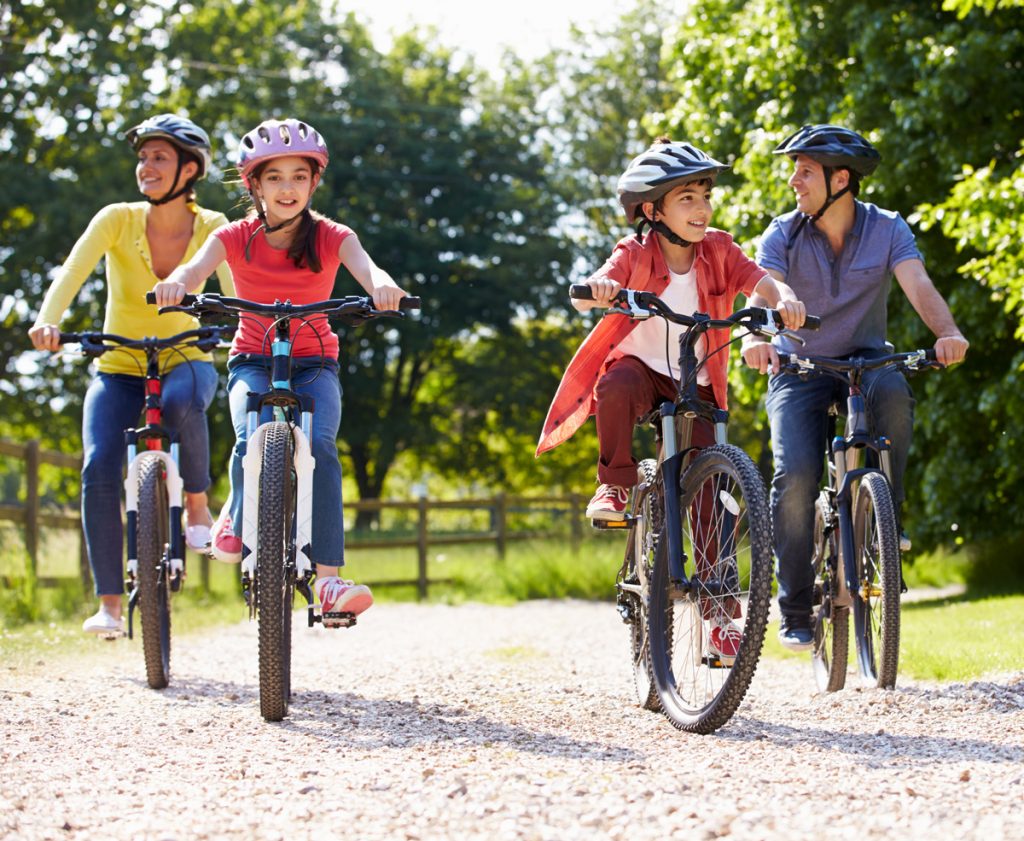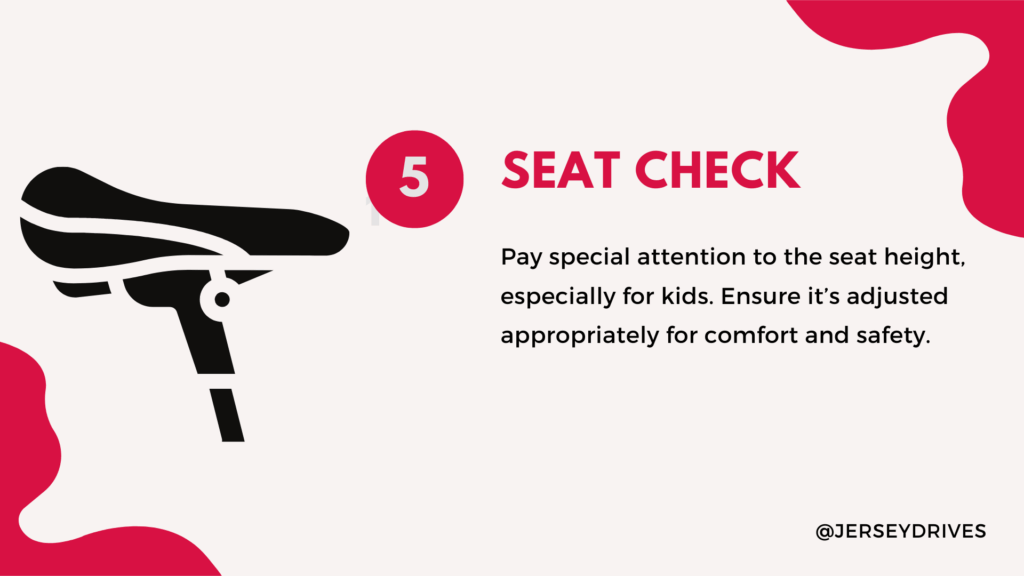Safety is a Two-Way Street
As spring arrives in New Jersey, more people take to the roads—whether walking, cycling, or driving. Regardless of how we travel, we all deserve to get home safely. It’s crucial for pedestrians, cyclists, and motorists to work together to ensure our roads are safe for everyone.
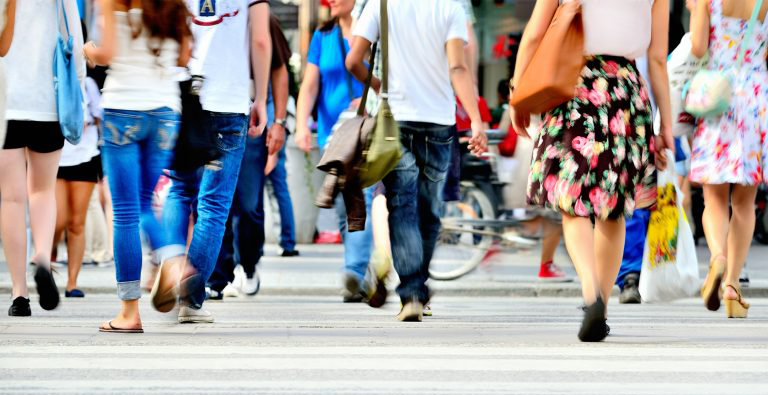
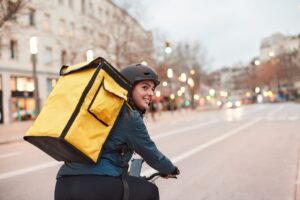
For Cyclists/ E-Scooters
- Use hand signals – so drivers and motorcyclists know which direction you are headed.
- Use lights –NJ requires a white light on the front and red light on the back when riding at night.
- Wear a helmet – state law requires anyone under 17 to wear a helmet.
- Obey all traffic laws– keep right, stop at red lights and stop signs.
- Maintain your vehicle– salty, slushy roads can damage your bike or scooter. Wipe your vehicle down every ride to avoid rust and check your tire pressure.
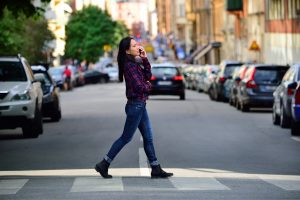
For Pedestrians
- Use cross walks and cross at intersections – make eye contact with drivers, motorcyclists, cyclists and scooters before crossing.
- Use sidewalks when available – if not stay close to the curb and walk facing traffic.
- Obey WALK/DON’T WALK signs
- Watch for vehicles – entering or exiting driveways or backing up in parking lots.
- Be visible and minimize distractions.
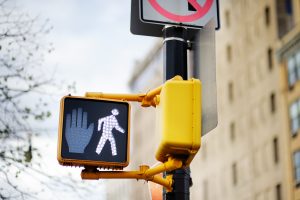
For Everyone
- Cross the street in a well-lit area – under streetlights or near crosswalks if available. If not, use your phone as a flashlight and cross at corners. Using lights will ensure that motorcyclists, cyclists, and scooter riders can see you.
- Avoid being distracted – by your phone and wearing headphones, especially when crossing.
- Avoid alcohol and other drugs – it can slow your reaction time and alter your balance when riding or walking. This is crucial for your safety and the safety of motorcyclists, cyclists, delivery workers, scooter riders, and pedestrians who share the road with you.
225
Pedestrians killed on NJ roadways in 2024
4
NJ law requires drivers to leave at least 4 feet when passing cyclists, pedestrians, and other vulnerable road users.
56
Million people road their bikes in the US in 2024.
While injuries can happen anywhere, be especially cautious when riding on roadways where most bicycle-motor vehicle collisions occur. Follow these tips:
- Always wear an approved bicycle helmet (head injuries are the greatest risks for cyclists!)
- Obey all the traffic laws and use hand signals so vehicles know where you are headed
- Wear protective and reflective clothing for best visibility
- Make sure your bicycle has a headlamp if riding at night
- Keep your eyes and ears open – avoid using headphones and smartphones
Wearing a helmet to protect your head in the event of a crash is a no brainer. But wait! Before you strap on that helmet on yourself or a child, make sure your helmet:
- Is designed for your activity (bicycle helmets are different than those for skateboarding/rollerblading)
- Fits properly
- Does not have any cracks or defects
- Has a SNELL or ASTM seal of approval on it.
- Is replaced every 3-5 years
Check out these brochures to learn more about bike safety for you and your kids:
Youth, under the age of 17
are required to wear an approved helmet in NJ
when cycling, roller skating, in-line skating, or skateboarding.
The NJ Safe Passing Law
The NJ Safe Passing Law went into effect on March 1, 2022 and requires drivers to slow down and move over for pedestrians, cyclists, and other vulnerable roadway users. Learn more here.
- Drivers must move over a lane if possible (while following existing laws).
- Drivers must provide a distance of at least 4 feet when passing vulnerable road users. Otherwise, drivers must slow to 25mph and be prepared to stop until they can pass safely.
- The penalty for this law is a $100 fine ($500 if bodily injury) and two points on your driving record.
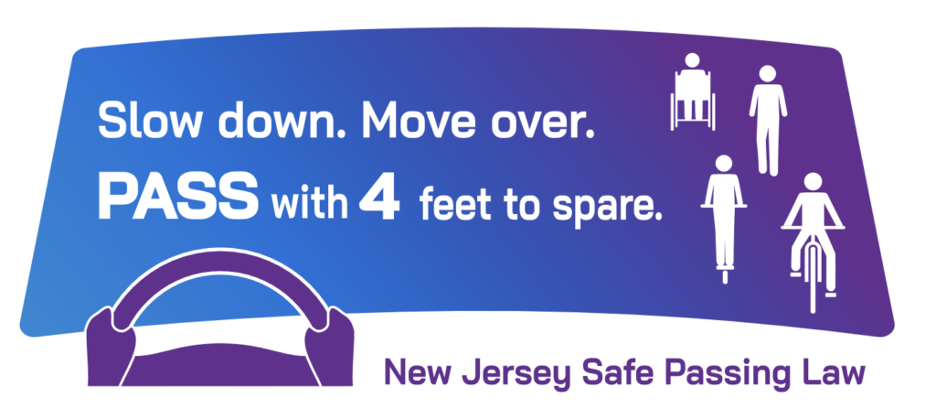
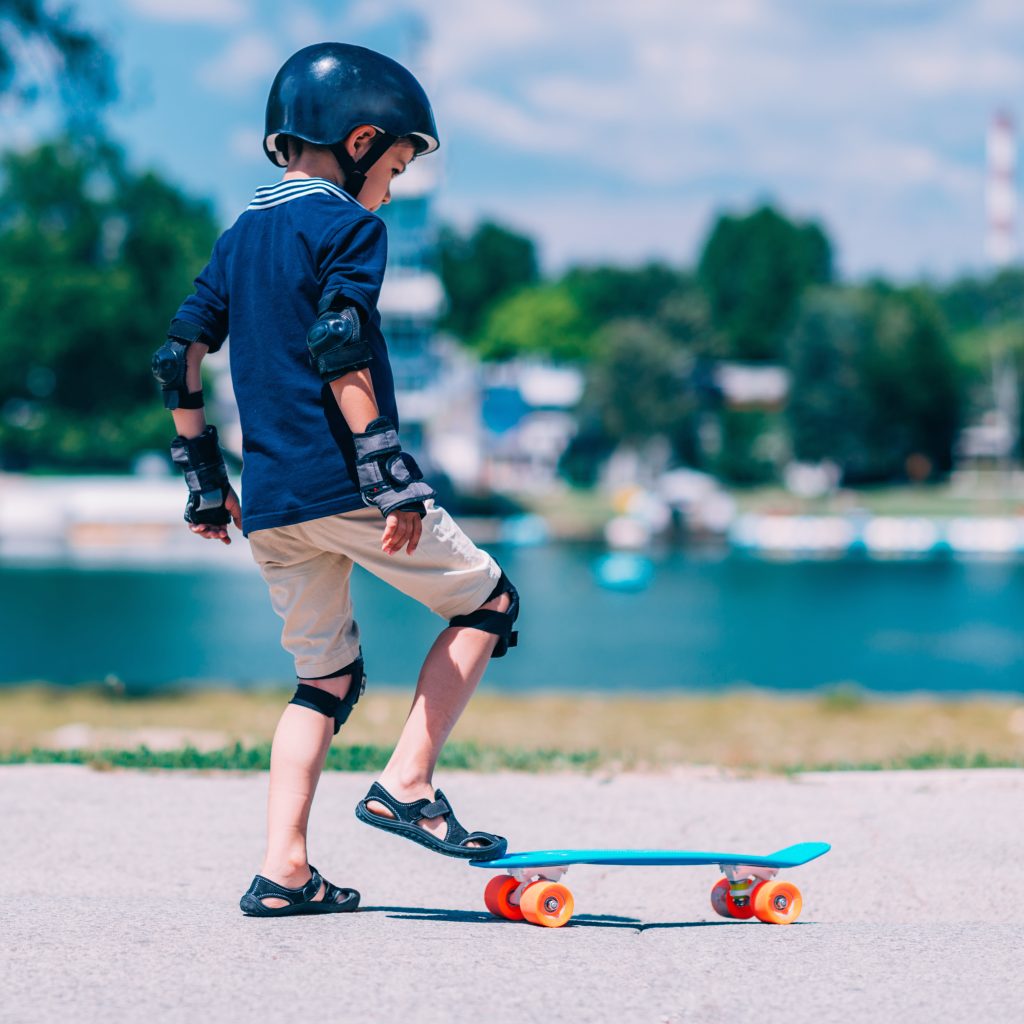
As a motorist, be mindful of pedestrians at crosswalks and intersections as well as in downtown areas where pedestrians tend to jaywalk – randomly crossing in the middle of a block or in crowded areas and event venues.
When driving always keep your eyes open for different types of pedestrians, including:
- Children – especially near schools, playgrounds and neighborhoods
- Dog walkers
- Skateboarders
- Runners and walkers
- Bicyclists
- Seniors and others with assistive devices such as canes, walkers or wheelchairs
- Workers
- School crossing guards
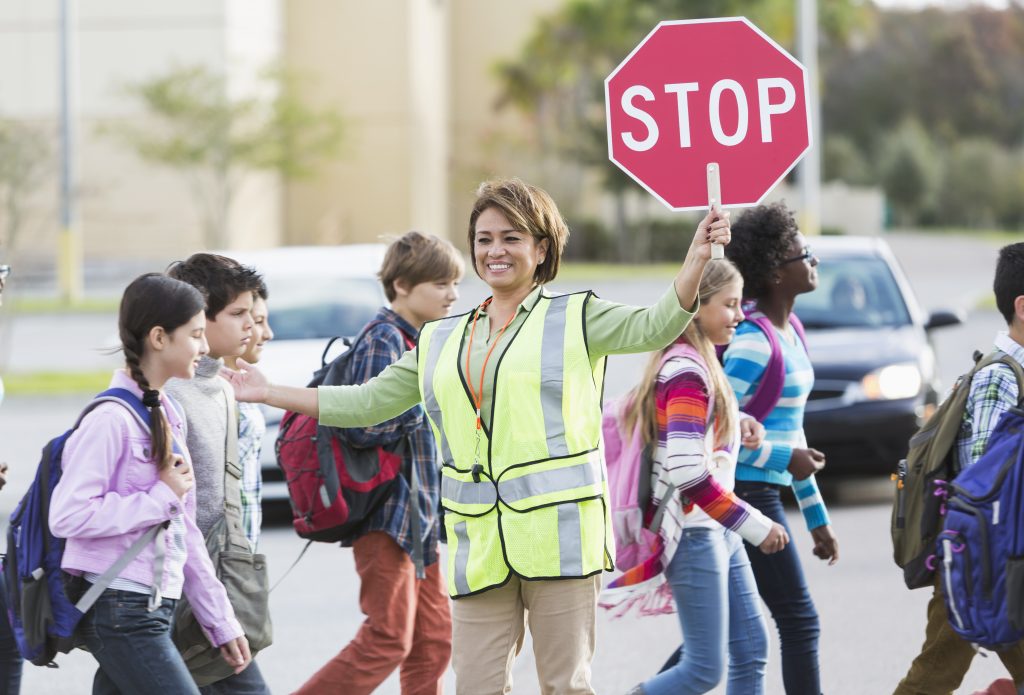
Whether you have kids you bring to school or you are just passing by one, parents and motorists have a responsibility to help ensure the safety of children and teens, “student pedestrians” – especially in school zones! Stay alert and following these safety tips:
- Use designated drop-off and pick-up areas and do not cross lanes to pass.
- Obey the posted speed limits (25mph or lower in some areas)
- Watch for students crossing outside the designated areas (especially when they are running late!)
- Look for and obey crossing guards directing students and traffic
- Don’t forget, students may be wearing headphones or using smartphones while walking.
Parents: Learn more about school zone safety for your kids >
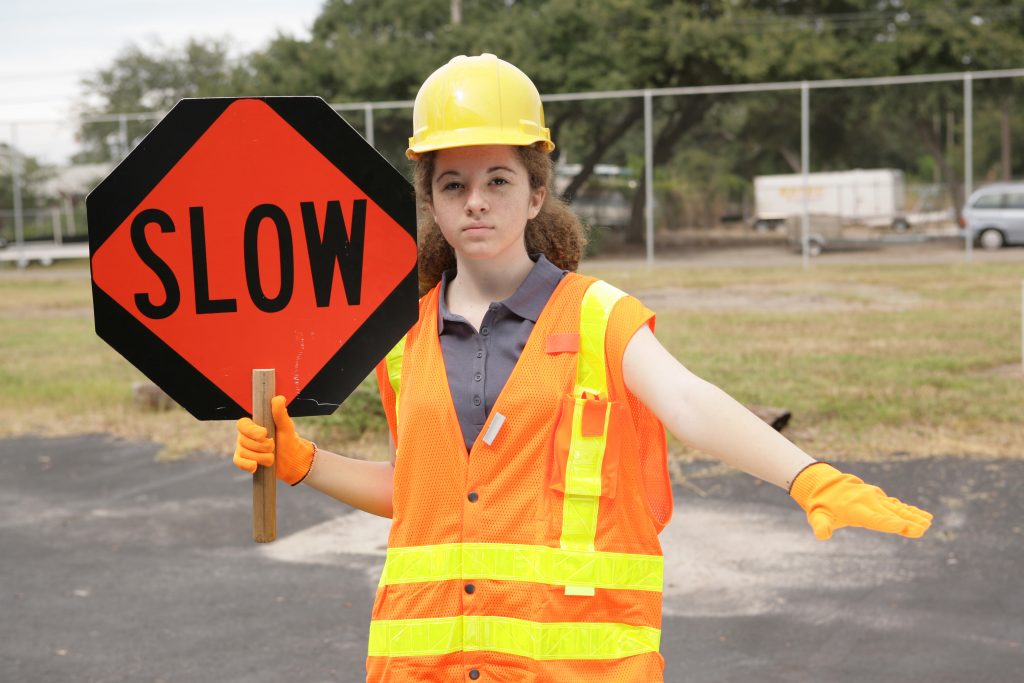
From construction workers to landscapers — lots of people work on and near roadways. Make sure you “Give them a Brake” by slowing down and allowing space for them to work safely. In many cases these workers are using equipment that may prevent them from hearing vehicles coming. Keep your eyes out for:
- Sanitation workers
- Landscapers
- Tow-truck operators
- Police & Emergency Responders
- Crossing guards
- Utility workers
- Construction workers
- Mail/package carriers
Share the Road
As a motorist, be mindful of pedestrians at crosswalks and intersections as well as in downtown areas where pedestrians tend to cross.
When driving always keep your eyes open for different types of pedestrians including:
- Children – especially near schools, playgrounds and neighborhoods
- Motorcyclists
- Dog walkers
- Skateboarders and scooter riders
- Runners and walkers
- Bicyclists
- Seniors and others with assistive devices such as canes, walkers or wheelchairs
- Workers
- School crossing guards
